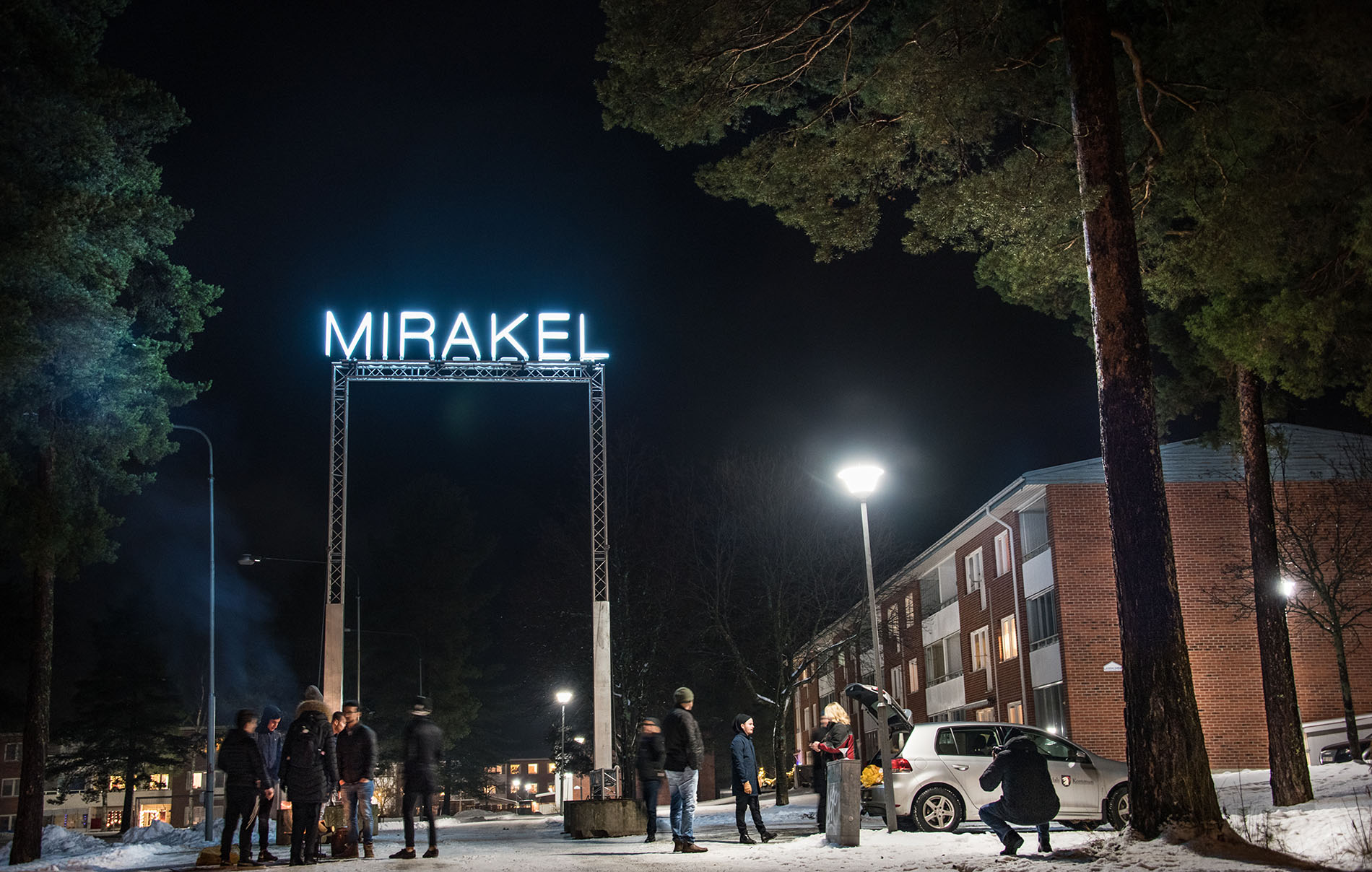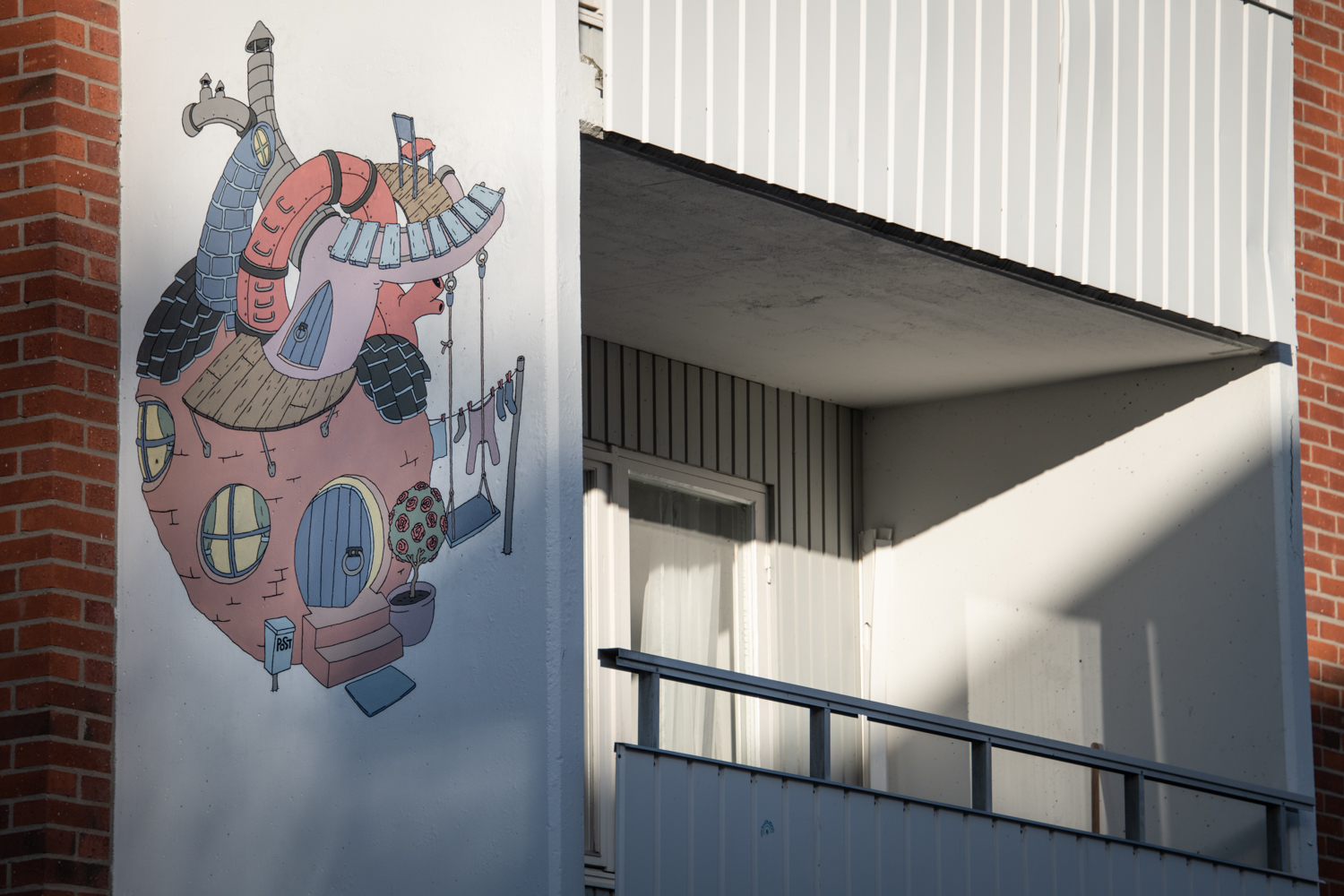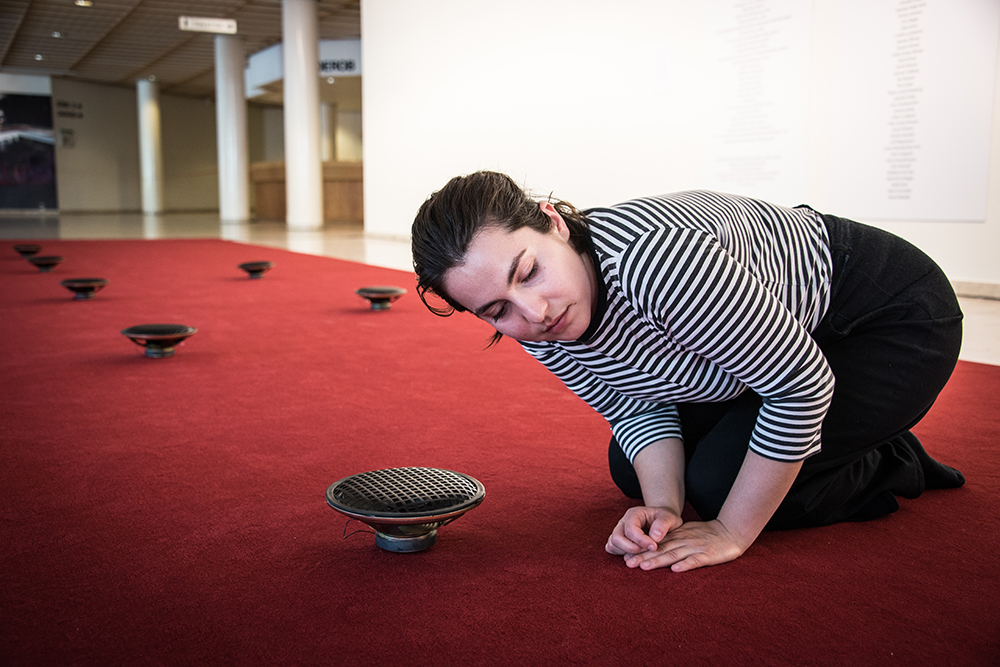The artist Santiago Mostyn’s eight-meter-high light sculpture Mirakel is both a statement and a question. The miracle is here, but what do miracles signify? The facades of the apartment buildings bear images by the illustrator and comic book author Kalle Landegren that interprete some of the locals’ stories of what a miracle is for them and give each apartment block an identity of its own.










Santiago Mostyn’s Mirakel was chosen for its form and sculptural expression which makes it visible from far away, as well for its multitude of possible meanings. The word miracle is similar in many different languages, based on the Latin miraculum (object of wonder), miror (to marvel at), mirus (wonderful), and from proto-Indo-European roots smei-, mei- (to smile, to be surprised). Miracles encompass surprise, promise, hope, and expectation, but are also marked by impossibility. The work harbors this opposition and becomes a metaphor for all the people and events that take place all around it.
Mirakel was installed temporarily in the winter of 2016 at Gärdeåsen in Ljusdal, a central town of the municipality by the same name, with 6,000 inhabitants. In 2019 it got a permanent placement. This was the result of the circumstances around the project changing dramatically several times, amongst other things due to a potential sale of the entire residential area, and it meant that different artistic approaches could be tested resulting in two different works that are united by a common theme: miracles. The second work is Gärdeåsens sju underverk (The Seven Wonders of Gärdeåsen) by Kalle Landegren, which was developed in collaboration with Ljusdal’s international women’s organization. The collaboration culminated in an educational, artistic project aimed at making a coloring book for the neighborhood’s children, based on the artist’s interpretations of the women’s stories. When circumstances changed again — the sale didn’t go through after all — it became possible to take Landegren’s interpretations to another level by painting them on the facades of the buildings. Inspirational tours of other residential areas that have art incorporated into their architecture led to the desire to have art help with orientating oneself in the area and giving the different housing blocks their own identity


